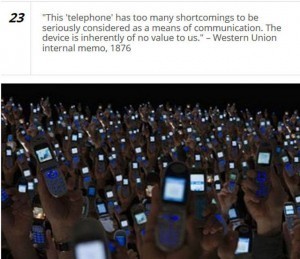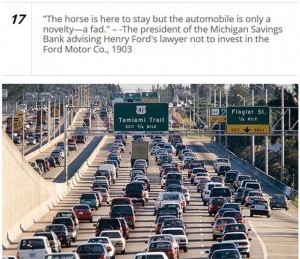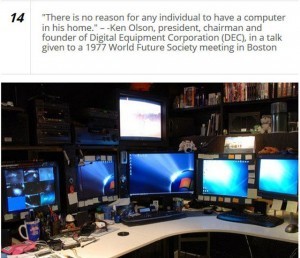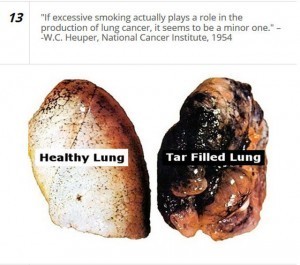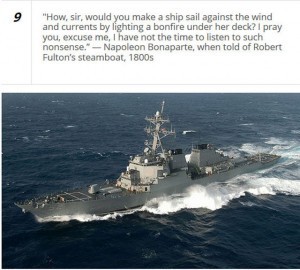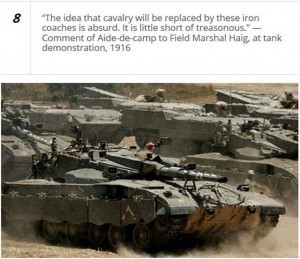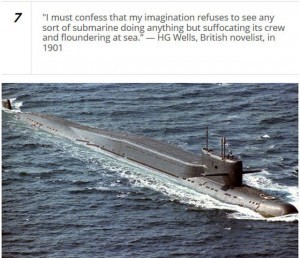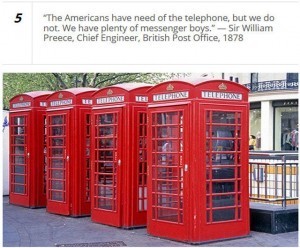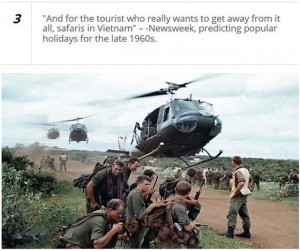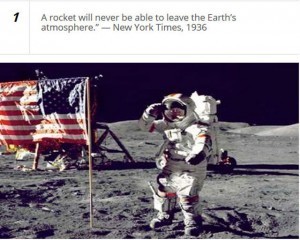Chris Rogers's Blog, page 21
February 8, 2015
Writing Myths Busted: #1 Never Start with Weather
If you believe the myths, your stories will sound like boilerplate. Instead, read and learn from great writers who break rules beautifully.
The sky had gone black at sunset, and the storm had churned inland from the Gulf and drenched New Iberia and littered East Main with leaves and tree branches from the long canopy of oaks that covered the street from the old brick post office to the drawbridge over Bayou Teche at the edge of town. The air was cool now, laced with light rain, fecund with the heavy scent of wet humus, night-blooming jasmine, roses, and new bamboo. I was about to stop my truck at Del’s and pick up three crawfish dinners… In the Electric Mist with Confederate Dead, by James Lee Burke, winner of the Guggenheim Fellowship, two Edgar awards, and Mystery Writers of America’s Grand Master Award.
Brightness fell from the air, nearly as tangible as rain. It rippled down windows, formed colorful puddles on the hoods and trunks of parked cars and imparted a wet sheen to the leaves of trees and to the chrome on bustling traffic that filled the street. Miniature images of the California sun shimmered in every reflective surface, and downtown Santa Ana was drenched in the clear light of a late June morning. When Rachel Leben exited the lobby doors… Shadowfires, by Dean R. Koontz (as Leigh Nichols), bestselling author of suspense thrillers, with 14 hardcovers reaching #1 on the New York Times bestseller list.
It was a bright cold day in April and the clocks were striking thirteen. Winston Smith, his chin nuzzled into his breast in an effort to escape the vile wind, slipped quickly through the glass doors of Victory Mansions, though not quickly enough to prevent a swirl of gritty dust from entering along with him. The hallway smelt of boiled cabbage and old rag mats. At one end… Nineteen Eighty-Four, by Eric Arthur Blair (as George Orwell), considered one of the most influential writers of the twentieth century and, in 2008, was ranked by The Times as second among “The 50 Greatest British Writers Since 1945.”
Incidentally, these great writers also broke at least two other writing myths. Can you guess which?
February 3, 2015
Nothing So Boring as a Straight Line
Girl meets boy, girl falls for boy, girl marries boy – boring. Girl meets boy, girl turns up dead, boy arrested for murder- boring. Whether we write sweet or gritty, a story needs lots of twists, with a little sweet in the grit and a little grit in the sweet.
The same goes for paintings. Although Pareto’s principle: the 80/20 rule, or the Law of the Vital Few (which I prefer), is often misused, I think it holds pretty darn true in art and in literature.
Eighty percent of the emotional impact should come from twenty percent of the entirety. At least, that’s my target. Sometimes 70/30 is a better split. Sometimes 75/25. Never 50/50.
Paradise Cursed, the paranormal novel in my computer at present, is 80% spooky happenings with a love story thrown in and 20% heart-galloping scary (at least, that’s my intention). No one remembers an entirety, and a story or painting that has too much going on all over is not much better than one with nothing going on.
It’s the 80% area respite that makes the 20% impact all the more engaging. That significant 20% has to be emotionally evocative.
So how many twists are optimum? If we apply the 80/20 rule, that would be five. There may be many more changes – setting, POV, weather, characters added or deleted, etc – but only five significant twists.
On my easel at present are two paintings I’m struggling to complete, and this morning I reminded myself to check out the Law of the Vital Few.
Which few elements are making the biggest impact?
Which few do I want to make the biggest impact?
Where are they?
How am I obscuring them?
How can I enhance them?
Anytime we start a new art or writing project, the Law of the Vital Few is good to remember. Anytime we get stuck on a project, the questions above are important to ask. And after it’s finished, when you are so close to the material that you can’t see whether the emotional impact is working the way you intended, a good thing to ask someone you trust is, “What part do you find most engaging?”
February 2, 2015
It’s Absolutely Positively Impossible
“Don’t always listen to the experts,” my friend Ron Scott wrote when he sent me these interesting impossibilities forwarded by his friend Herb Rebhun. I think they’ll be fun to recall the next time someone tells me, “You’ll never sell those paintings,” or “People don’t want to read books about blah-blah-blah.”
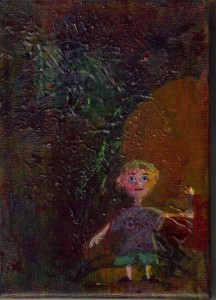 This tiny acrylic painting (7″x5″), titled “Everyone Has to Start Somewhere,” represents my first attempt to use applied texture. It was fun to do, and I still rather like it.
This tiny acrylic painting (7″x5″), titled “Everyone Has to Start Somewhere,” represents my first attempt to use applied texture. It was fun to do, and I still rather like it.
January 31, 2015
Who Would You Take to Dinner?
If you could dine alone with anyone from any period of history, who would it be? My choice will make a lot of people scratch their heads, and a few people laugh, because you don’t hear much about Steve Allen anymore, yet he was an accomplished writer, musician, composer, lyricist, actor and comedian. He wrote more than 50 books, including 9 co-authored murder mysteries, and more than 8,500 songs. He recorded more than 75 albums/CDs.
On a wall in my office I keep an autographed photo of Allen to remind me that nothing in life works unless we do.
Steve Allen is perhaps best remembered as the first host and co-creator of “The Tonight Show” (1954), the longest running entertainment series on late night television. After three years as host, Allen went on to other things, turning it over to Jack Paar, who was followed by Johnny Carson, and Jay Leno.
What I admired most, possibly because it happened during a turning point in my life, was an Emmy and Peabody Award-winning PBS program Allen originated, titled “Meeting of the Minds.” Presented in what has become typical “table talk” format, Allen hosted notable historical figures played by notable actors. Guests included Plato, Socrates, Aristotle, Thomas Aquinas, Queen Cleopatra of Egypt, Marie Antoinette, Florence Nightingale, Thomas Paine, Francis Bacon, Thomas Jefferson, Voltaire and Charles Darwin. Watching the interactions of these interesting, and often brilliant, people, scripted with actual quotes, was informative and fun.
A few things you may not know:
He scooped Ed Sullivan by having Elvis Presley appear first on The Steve Allen Show.
His songs have been performed by at least 77 vocalists, including Louis Armstrong, Tony Bennett, Sammy Davis Jr., Betty Garland, Ella Fitzgerald, The McGuire Sisters, Bing Crosby and Nat King Cole.
At the age of 79, he wrote his last bestselling book, Vulgarians at the Gate: Trash TV and Raunch Radio.
Despite the fact that he was constantly thinking, doing and creating, Allen often said his favorite role in life was Grandpa. He had 12 grandchildren.
Steve Allen was born on the day after Christmas in 1921 and died the day before my birthday in 2000. I would love to have had the chance to ask him, “Jeez, Steve, how did you do all that? Do you have a secret clone?”
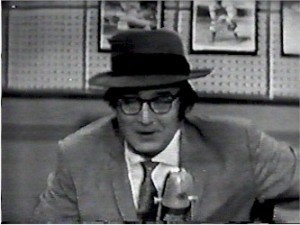 During Allen’s years in local radio, he discovered he could “write and deliver funny material, and that funny things seemed to occur to him unbidden and unexpectedly” (steveallen.com). His attitude of “keep it clean, keep it fun” served him well throughout a long, successful career.
During Allen’s years in local radio, he discovered he could “write and deliver funny material, and that funny things seemed to occur to him unbidden and unexpectedly” (steveallen.com). His attitude of “keep it clean, keep it fun” served him well throughout a long, successful career.
January 28, 2015
Save It or Trash It?
For every completed painting, I have at least one stashed that doesn’t measure up. They drive me crazy. Something good is in there, but what? And how do I finish without losing the “one good thing” that keeps me from throwing gesso on and starting over?
Writing is not much different. Before publishing Bitch Factor in 1998, I wrote four practice novels that never got past a first rejection. And I still create short story openings that crash and burn.
Not EVERY idea is worth pursuing. And paint is only paint.
But creativity stagnates if we just keep reproducing the single idea that catches fire with our reader/viewers. Remember Margaret Keane’s “Big Eyes”? I loved those paintings when they came out in the sixties. Now there’s a movie, but the idea was so “kitchy” that once it was gone, so was Keane’s recognition as an artist. And Thomas Kincaid, the “painter of light,” he’s great, but how many cabins in the woods do we need?
Then I think of Amadeo Modigliani, his women have long necks, his men have none. Did he long to paint water lilies on a pond? Did Claude Monet long to paint portraits? Yes, we know what the historians wrote about them. What will they write about us?
Monday night, an interior designer asked if I only paint nonobjective abstracts. I hesitated to answer, because it’s been drilled into my brain that we have to “specialize”, we have to impress our public with a “brand.” Pfui!
I love all kinds of paintings, all kinds of stories. Look around my house, however, and you’ll see that I’m not in love with hyper-realism. I prefer stylized paintings. And you won’t see many romance novels. I prefer dark and gritty to light and fluffy. But I like a little fluff with my grit, and I like a little realism with my abstractions.
Okay, I’ve vented. And I still muddle around my studio wondering, Save it or Trash it?
 Queen for a Day is a watercolor painting waiting to be finished. Yet I’ve painted lots of abstracts and even other watercolors without getting back to this one. I haven’t cut it up to use in a collage, so it might get finished yet.
Queen for a Day is a watercolor painting waiting to be finished. Yet I’ve painted lots of abstracts and even other watercolors without getting back to this one. I haven’t cut it up to use in a collage, so it might get finished yet.
January 25, 2015
Don’t Get It Right, Get It Written
Finishing one book, starting another requires a mind shift, especially when the new book is really different. Today I have 26,000 words of Paradise Cursed, a book I plan to publish by summer. So I’m on a tough deadline. Michael Hague, story consultant, author and lecturer for the screenwriting industry, is a strong proponent of getting the words down fast. So am I.
The faster we write and the less self-editing we do in the process, the more raw, gutsy, unselfconscious material we create. For novelists, screenwriters, and other storytellers, raw goop that comes from deep in the psyche is manna.
Ultimately, though, someone has to read that goop. That’s where revision comes in. I revised my first published novel, Bitch Factor, thirteen times before it saw print, not because I got it wrong the first time but because I didn’t get it as right as I wanted it to be. That’s okay. Revision is easy, compared to getting that rough first draft down on paper.
Here’s a simple five-step process that accelerates any type of creative writing, including narrative nonfiction and any sort of storytelling.
Down and Dirty
Program your logical mind for the format you need to fill. In other words, think briefly about what you’re writing, beginning, middle and end. The best way is to visualize the individual parts of the finished piece.
Here’s an example you already know, a simple letter format that’s been embedded in your memory since grade school:
Name and address of the recipient – Date – Salutation – Body of the letter – Complimentary close – Your signature.
Every finished piece of prose begins with such a format—even if it’s only roughly outlined in the writer’s mind—from a simple sentence (subject, verb) to a paragraph to a single “scene” in a story (character goal, conflict, reversal) to a complete novel or screenplay.
Immerse yourself in data. Take three to ten minutes to review the specific topic you’re writing about—any notes you might have, pages dog-eared in your favorite books, web sites, conversations with experts, periodicals. You might also read the opening of a successful story you’ve written previously or any favorite story that stirs your creative juices. During this ten minutes, you’re stuffing your brain with relative thoughts, facts, quotes, questions, and other tidbits.
Engage your creative mind. At the end of ten minutes, without notes, sit down and start writing. Just pour it out. If you’re using a pen and paper, keep the pen moving. If you use a keyboard, keep your fingers typing. Don’t stop to make corrections. Don’t look up words. Don’t puzzle over a fact. Don’t even scratch out a typo.
Simply write: fast and raw. Throw some passion into it.
Write for at least 20 minutes, not more than an hour. Then stop.
Take a hike. Leave the material for a while, say, ten to twenty minutes. Rake the yard. Fold clothes. Make breakfast. Call a friend. Think about anything except the material you’ve written. Let your subconscious work on it.
Revise gently. Read your rough draft and make any quick and easy fixes you see, but don’t over-analyze it at this point. It needs more time away from you. Tomorrow is soon enough.
To be a great storyteller, you have to write, write, and rewrite. Never expect a first draft to be perfect or you’ll be constantly frustrated. Frustration leads to constipation of the brain. Get something down on paper, something raw and fresh and impassioned.
Roll Out the Passion
Isak Dinesen once wrote, “All sorrows can be borne if you put them into a story or tell a story about them.” I can’t speak to the psychology of that statement, but I can say that any emotion—love, sorrow, anger, pride, curiosity, etc.—will create more interesting writing than the lifeless stuff that usually dribbles from the logical part of your brain.
So, whatever your topic, try to love it, hate it or get ticked off about it.
Try It Now
Story Units have various formats depending on their purpose, but for now let’s keep it simple: Beginning – Middle – End.
Your assignment is to write a few rough paragraphs—or more, if you’re on a roll—that involve:
Two characters, each with a goal and an emotion connected to that goal,
Interaction between the characters, preferably conflict, and
Resolution of some sort, either negative or positive.
Using the 5-Step process above, write it.
Don’t Get It Right…
Remember, only after an idea is out of the gray matter and onto the page, where it’s visible, can you tackle it from all sides and polish it until it squeals.
Get it written. Slap it down on the page fast. Then keep improving your draft with each rewrite.
 This is a painting I did using the same process.
This is a painting I did using the same process. 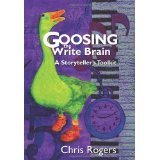 Goosing the Write Brain: A Storyteller’s Toolkit, available at: Amazon.com
Goosing the Write Brain: A Storyteller’s Toolkit, available at: Amazon.com
January 16, 2015
Get Swept Away to an Enchanting Time and Place
Claudia Herring’s debut novel reminds us that reading should carry us away to adventure in interesting times and places. His Master’s Bride is a fresh look at a magical world readers will long to revisit again and again.
Yasir is a djinni cursed to abandon the love of his life, live in an urn and become enslaved to any who open it. Lord Peter Bramley, on an expedition to Egypt in 1811, acquires the urn from a peddler and discovers the djinni but soon learns that wishes can backfire. While outside his urn, Yasir sees a portrait of Bramley’s new bride, Lavinia, and believes it is Thalia, his own lost love returned to him. He casts a spell, causing Bramley to forget being master and give the urn to his bride at home in England.
Yasir’s love is so deep that he soon enchants and seduces Lavinia. Meanwhile, her husband has returned a different man, cold and violent. She is falling in love with Yasir, but unless he can free himself from the curse that chains him to the urn, they have no future. When he calls on a djinni friend to help, Yasir’s magic leaves a trail, which leads his old enemy, Rakhshan, to Bramley House.
Deftly, and with a confidence borne of deep knowledge of her story world, Herring weaves an enchanting tale of forbidden love and ancient magic. The story moves seamlessly from Yasir’s present struggle to reveal his captivity in Rakhshan’s dungeon, with vividly drawn characters, excellent pacing and surprises at every turn. Readers will close this book wanting more.
January 2, 2015
It’s Only Fair
Not even the best readers can love every book. A reviewer I trust and admire had difficulty falling in love with my characters. I get it. Ruell and Longshadow are suffering losses, Hale is having presidential difficulties in Africa while worrying about her upcoming re-election. It makes for less than a fun, quick read.
My short stories are fun, quick reads. The Dixie Flannigan series is not always fun but fewer main characters make the the reading easier.
If I’m going to tout my books, it’s only fair that I also present the not-so-glowing comments. Andi Klemm is honest and, if anything, biased in my favor, since she loved Dixie in all four books. I’m looking forward to an upcoming interview where we can discuss Emissary in more detail. Meanwhile,
Here’s a link to Andi’s review at Anakalian Whims. https://anakalianwhims.wordpress.com/2015/01/02/emissary/
January 1, 2015
PLOT: Grab it any way you can.
This Day 1 of 2015, I’m not starting a new novel, but I am committing to Paradise Cursed, which I started in 2011. With fewer than 100 pages written, I intend to finish a rough draft of the entire book by February 1. First, of course, I have to revisit the original plot to get hold of it again.
Goosing the Write Brain, my tome on writing, contains 75 pages on Plot, but at times like now, when a story is ripe for completion, I visit page 113, “Plot in a Nutshell.” Some writers love plotting, some hate it. Some writers plot a story to the end in incremental detail, while others prefer to work “organically,” letting the story unfold on the page as it unfolds in the mind.
I strongly believe that whatever works for you, do it. On the other hand, if you’ve been “going to write” that novel for years and can’t seem to begin, or if you’ve started one or more and can’t get past the middle, then maybe you’d like to join me on Page 113.
Setup:
Begin with an idea that hooks you. Ideas are everywhere.
Pinpoint the prize for which opposing characters are willing and ready to fight—murder, treasure, a missing child, honor …
Devise a central character who will take immediate aggressive action to win the prize.
Decide, as Alfred Hitchcock once said, what your hero will need to do, then give your hero the knowledge, skills, and abilities to make success plausible. It’s good if the reader can like and approve of the hero. But don’t discount the lovable rascal, part hero, part villain. Feelings, not just greed or duty, should be the motivating force.
Pick a moment that will plunge the character into exciting action, then open the starting gate.
Complications:
Pit the hero against a worthy opponent. Remember: the hero’s strength equals the villain’s strength.
Outline the dangerous step-by-step action your character must take in the face of unanticipated developments to solve the murder, find the treasure, or rescue the missing child.
Payoff:
Work out a satisfactory conclusion in which the character your reader wants to win wins. A climax needs an unanticipated twist: Someone thought to be dead is actually alive/or vice versa. The coins thought to be counterfeit are actually platinum. The child was not kidnapped but is hiding from the rescuer.
Be sure to plant elements that make the twist plausible. And make sure the winner deserves to win.
When imagining the infrastructure of a house, Plot represents the timbers. Once they are placed, we can add any sort of organic or architectural embellishment to flesh out the story. But only by previously envisioning a desired result can we know where to place the timbers.
So on with Paradise Cursed, a story of pirates and a Caribbean cruise and paranormal happenings.
 Goosing the Write Brain: A Storyteller’s Toolkit, is available at Amazon.com.
Goosing the Write Brain: A Storyteller’s Toolkit, is available at Amazon.com.
 This unfinished watercolor painting is a character from Paradise Cursed. It, too, if God’s willing and the creek don’t rise, will be completed by Feb. 1. Please, dear friends, help me stay focused as you did in 2014.
This unfinished watercolor painting is a character from Paradise Cursed. It, too, if God’s willing and the creek don’t rise, will be completed by Feb. 1. Please, dear friends, help me stay focused as you did in 2014.
December 30, 2014
2015: Write It Down
Thanks to all of you who helped to keep me focused and inspired, 2014 was a great year.
I had three basic goals:
1. Publish Emissary, a book I’d worked on for a number of years.
2. Kick my art career out of the nest so that people can see what I’m doing.
3. Write and publish my third short-story anthology, Death Edge 3.
Thinking is fine, but until a goal is written down, it’s like smoke: Gone with the first hard wind.
And who doesn’t experience those sudden gusts that blow away all our plans?
Luckily, my goals were written, so they stood firm and – hallelujah! – they happened. I feel tremendously honored that Emissary is selling well and the Death Edge series has picked up new fans. On the art scene, a total of 19 paintings sold, and two of my watercolors were awarded national publication. “Boys on the Beach” appears in The Artistic Touch 6 and, “Your Turn,” will be published in Splash 16 – Best of Watercolor: Exploring Texture.
Having YOU, my good friends and family, in my cheering section made all the difference. Discovering Chart House Press made publishing not only easier but more exciting. Similarly, being discovered by The Frame Gallery in Bryan Tx, plus Xanadu Gallery in Scottsdale Az, painted my year brilliantly sun-kissed and sweet.
For 2015, I’m tackling four goals:
1. Publish Here Lies a Wicked Man, a cozy mystery in my bag of previous writings.
2. Write and publish Paradise Cursed, a paranormal thriller that sits on my back burner.
3. Write and publish Death Edge 4.
4. Move my art career ahead by showing in additional galleries and publications.
That’s a plateful, but you see it written here, so I can’t wimp out.
Now take a moment to write down how your 2015 will look. If goals are written, they can withstand a lot of hard wallops from any ill wind that blows our way.
Boys on the Beach, watercolor, in the collection of Cullen and Yolanda Rogers.
My Turn, watercolor, in the collection of Lorne and Kelly Morris.
A HAPPY and FRUITFUL 2015 to all.





